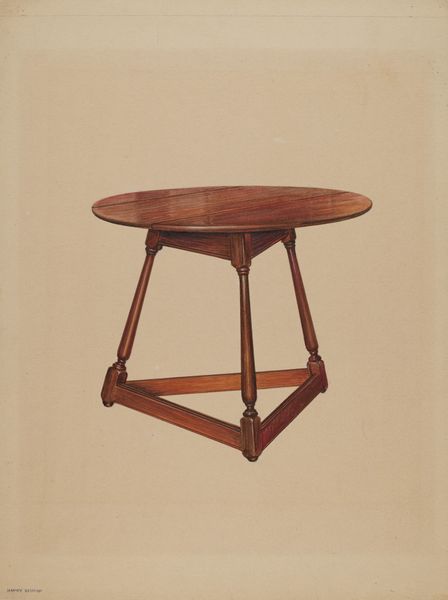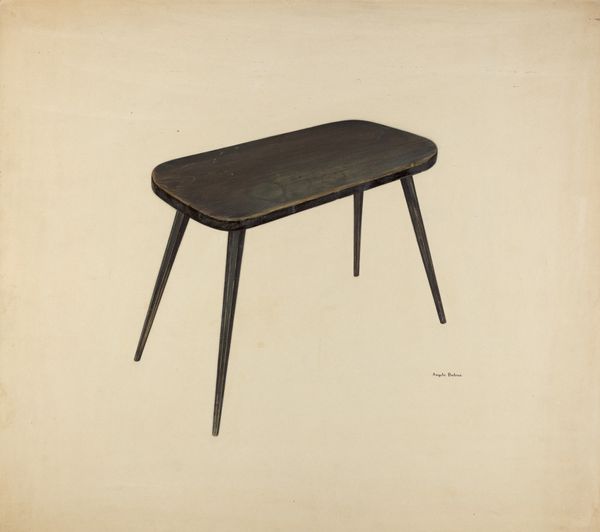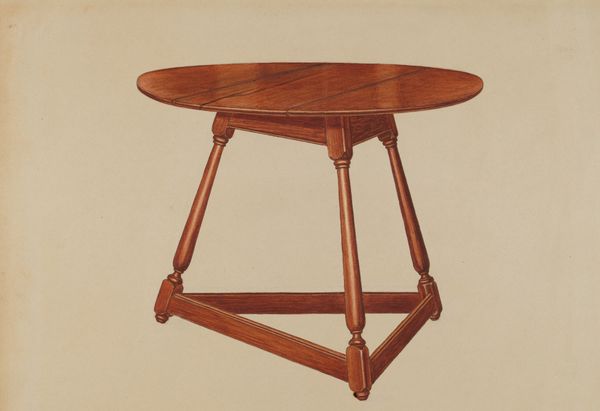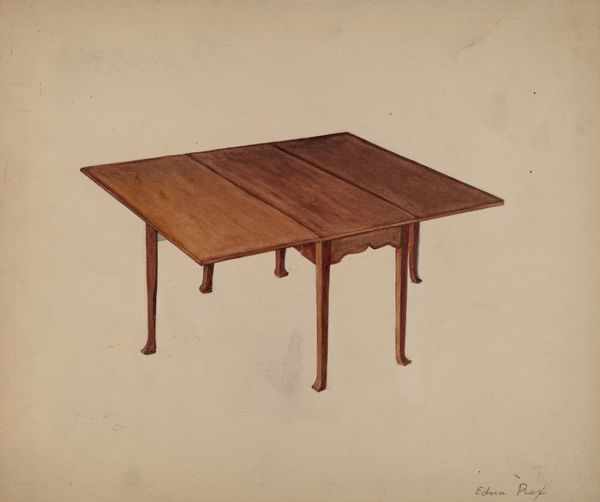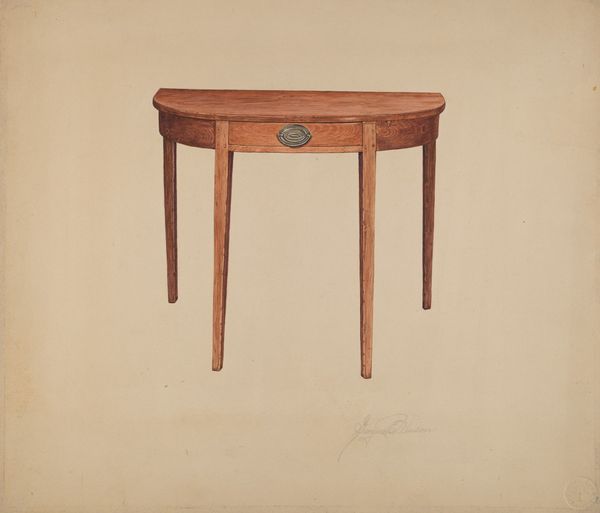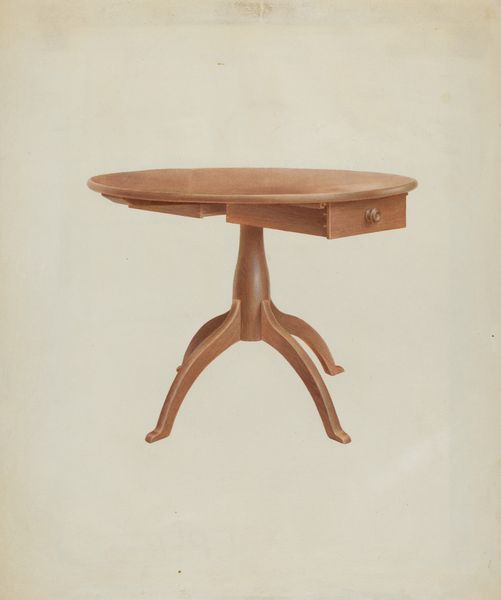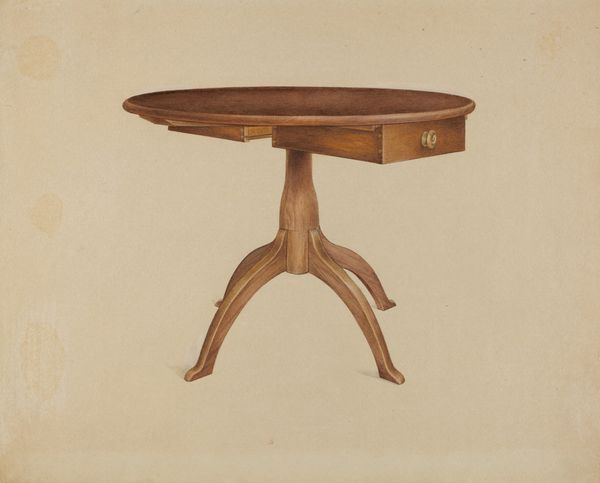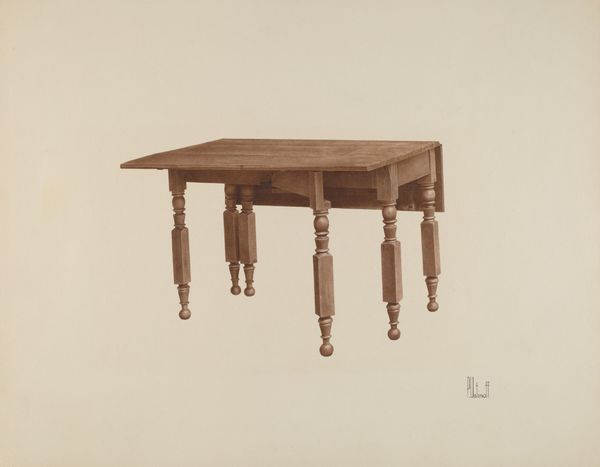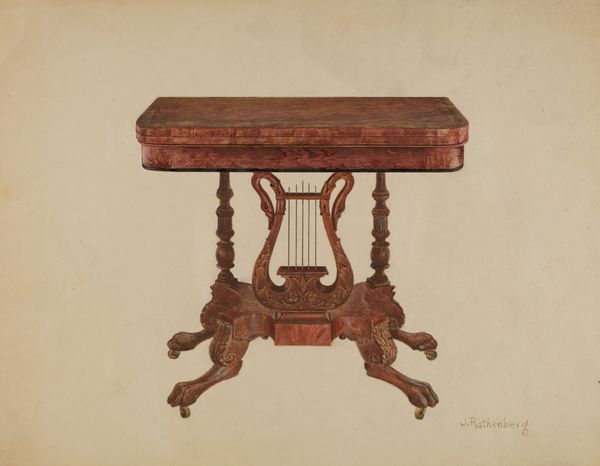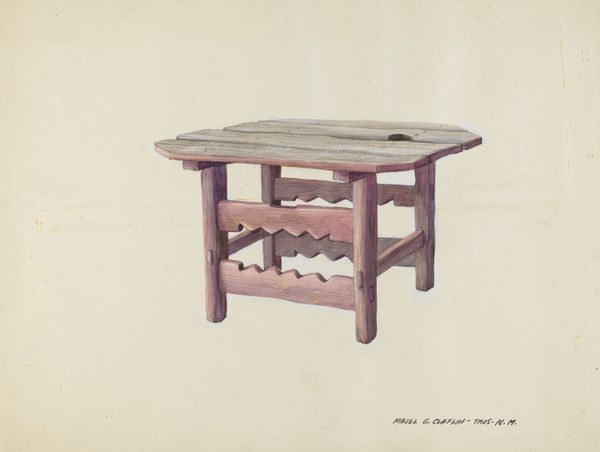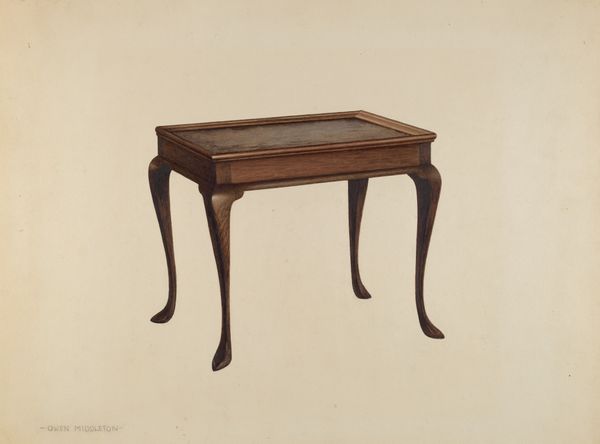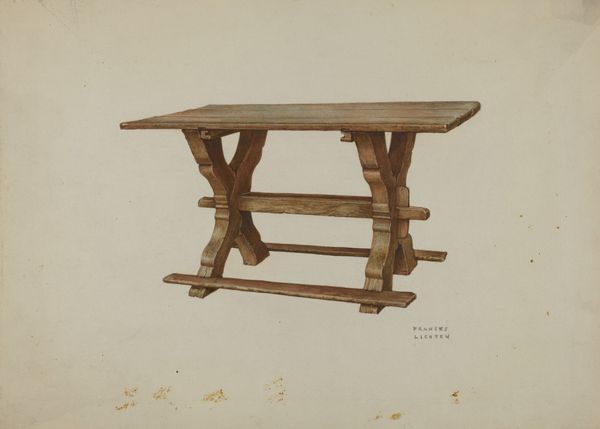
drawing
#
drawing
#
watercolour illustration
#
watercolor
#
realism
Dimensions: overall: 24.6 x 30.5 cm (9 11/16 x 12 in.) Original IAD Object: 30"high; 32"wide (according to scale drawing).
Copyright: National Gallery of Art: CC0 1.0
Curator: Here we have Vincent P. Rosel's "Table," a watercolor drawing likely created around 1937. What's your first impression? Editor: It strikes me as unassuming, almost shy. The delicate watercolors and the subject matter, a simple table, lend it a certain modesty. There's a tenderness in the rendering. Curator: Yes, it's quite intimate, isn't it? This drawing reflects a specific moment in the history of design, situated as it is in the late 1930s. The illustration may well have served as a technical illustration, or more likely, to depict a piece intended for mass production. The clean lines coupled with slight ornamentation. Editor: I am really intrigued by this potential connection to mass production. It gives me pause to consider the way functionality, art, and access come into play here. In what ways would mass-produced furniture reach diverse demographics, or be exclusive based on other identity factors such as wealth and status? Curator: Precisely! We can think about the politics of space, ownership, labor, and access, all refracted through the lens of something seemingly benign, a simple piece of furniture. Editor: Absolutely, the table here depicted seems both ubiquitous and individualized through Rosel's touch, raising questions around gendered or raced access to home ownership. What does having such a place symbolize and mean? It allows for us to connect themes of domesticity and social and economic power dynamics that were especially urgent at the time, as well as contemporary inequalities, and continue to require structural attention. Curator: Rosel's "Table" serves as a fascinating lens to view our own assumptions about design and production and its impact on our world. The art world has certainly historically neglected utility, or designs geared toward use. Editor: Ultimately, what I am reminded of by the illustration, especially given our present moment, is a renewed responsibility we have to each other as citizens in an increasingly tumultuous and unstable world. The way everyday images may become entangled in historical inequalities of opportunity must be understood for us to act justly. Curator: That's beautifully put, offering a profound perspective on this simple drawing. It serves as a good reminder that seemingly mundane objects have such intricate stories and continue to shape our world and the lives within it.
Comments
No comments
Be the first to comment and join the conversation on the ultimate creative platform.
